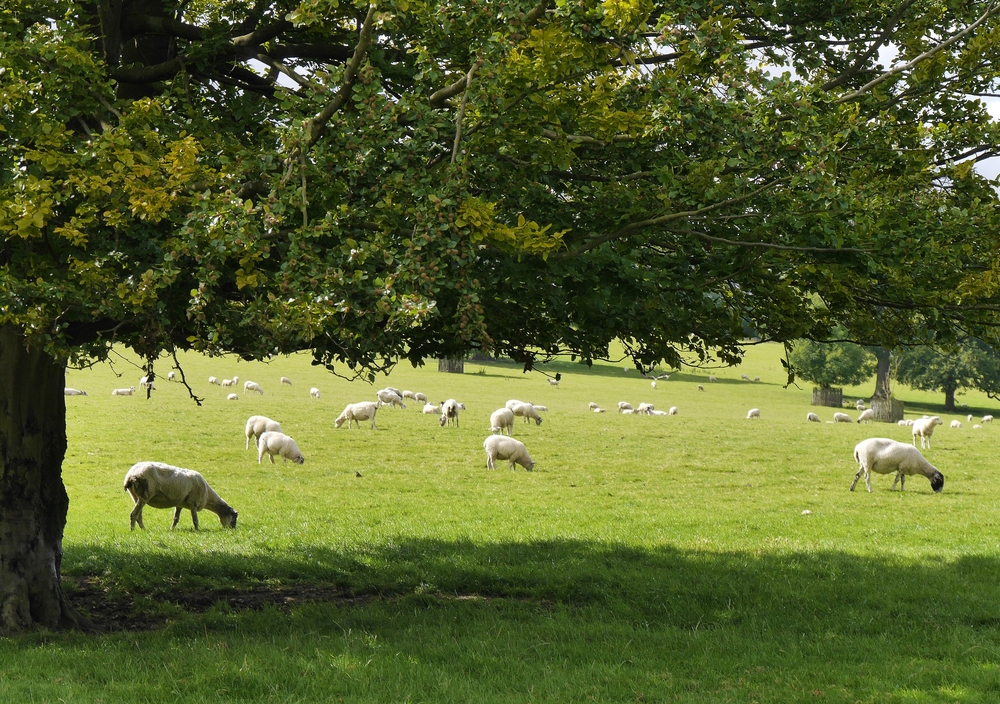Sheep farming: how planting trees can help your business blossom

The environmental impact of agriculture
Environmental concerns have never been higher on the social agenda and there is pressure on farming businesses to do their bit.
The NFU makes the valid point that the UK’s farming industry is progressive in comparison to other countries when it comes to the reduction of greenhouse gases. 61% of UK farmers are actively taking steps to reduce their emissions, including recycling, improving energy efficiency and improving nitrogen fertiliser application. The target remains for British farming to reach net-zero emissions by 2040.
The benefits of adding more trees to your farm go beyond environmental concerns, and by using non-productive land on your farm you can contribute to soak up greenhouse gas emissions. When managed properly, the simple act of planting trees on your farm can improve the productivity, health and welfare of your flock while helping your bottom line to blossom too. Too good to be true? Let’s take a quick look at how planting trees can benefit your sheep farming business.
Shelter from the storm (and the sunshine)
The weather is predictably unpredictable and, as you know, there’s lots of seasonal variation. Unfortunately, over-exposure to cold is a major cause of neonatal loss of lambs, with around one-third of lamb deaths attributed to cold exposure, hypothermia and starvation.
Trees can provide shelter from the wind and rain, leaving your flock less exposed to cold. Studies have shown that in cold, wet and windy weather, lamb losses can be reduced by up to 30% if good shelter is provided. What’s more, trials have suggested that daily liveweight gains will increase by 10-21% as a result of better shelter provision.
Reducing wind exposure, which can chafe the udder, lowers the incidence of mastitis, while good wind protection cuts the amount of time your flock must spend indoors – further reducing energy and emissions by reducing the need to heat indoor housing. In summer when the sun is blazing? Your flock can shelter from the heat in the shadows of the trees.
Laying down roots for improved biosecurity
There’s a lot to be said for livestock having lots of freedom to stretch their legs outside. But you can have too much of a good thing. When animals are free to trek uphill and down dale, there is an obvious biosecurity risk regarding the spread of disease from neighbouring farms. Lining the boundaries of your farm with dense shrubbery or tree belts is an easy way to keep your farm protected.
The grass is greener…
The reduction of wind speed presented by planting trees reduces the evapotranspiration (the combination of evaporation and plant transpiration) of water from grass. Shelter also increases soil temperature during early spring and late autumn. Add those two together and you can expect to extend the growing season of your grass, which can be crucial in dry springs and summers. In short: planting trees can be great news for the health of your pastures.
Helps to prevent flooding and soil erosion
It never rains, but it pours. Heavy (and constant) rain can cause serious problems with flooding and soil erosion. The latter is particularly damaging, leading to a loss of nutrient-rich pasture and enhancing the risk of sedimentary deposits and potential pollutants into watercourses. This can make sloping fields a no-go area in the autumn and winter months. So why not consider planting trees there instead?
Doing so has been proven to increase soil permeability (meaning it can absorb more rainwater). In fact research carried out at Pontbren revealed that planting trees can increase soil porosity and water infiltration by as much as 60 times. That’s great news. Because a reduction of surface water also leads to a reduction in the risk of liver fluke and lameness. What’s more, increased infiltration potential slows the rate at which water reaches streams and rivers – lessening potential flood risks downstream.
Financial support is available
Substantial grants – amounting to tens of thousands of pounds – are available for farmers who choose to plant trees on their land. Examples include the woodland creation grant and the Rural Priorities grant. There are also annual maintenance payments to help support the upkeep of your foliage.
Worth considering?
In an age where agricultural technology is moving faster than ever before, there’s something refreshingly simple about the idea of boosting your bottom line by planting some trees. Because with reduced disease risk and the promise of increased productivity on offer, it seems that what’s good for Mother Nature can be good for your business too.
Would you consider committing an area of your land to tree planting? Have you already done so? Start the debate with us on Twitter or Facebook. We would love to hear your thoughts.